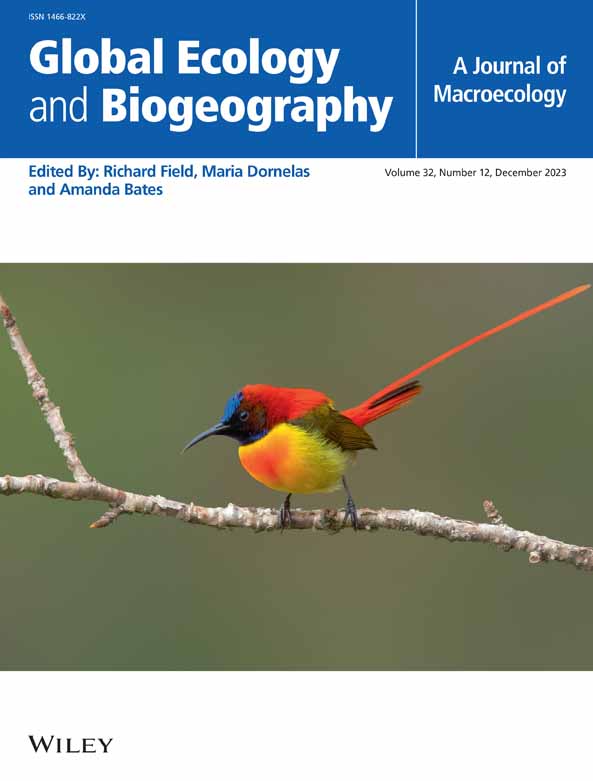Biodiversity Within and Beyond the Native Distribution of Tree Species: The Case of Pinus nigra Forests in Europe
Abstract
Aim
Forests dominated by non-native trees are becoming increasingly common. However, their impact on biodiversity remains uncertain, with a debate on whether they represent ‘green deserts’ or secondary habitats for biodiversity. We addressed this question by evaluating the patterns and ecological drivers of taxonomic and functional understory diversity between black pine (Pinus nigra) forests within and outside its native distribution range.
Location
Europe.
Methods
We collected a continental database of vegetation plots with full species composition and related functional traits. We compared α- and β-taxonomic (TD) and functional (FD) diversity between understories of P. nigra forests within and outside its native distribution range, and modelled the relative effects of climate, soil conditions, and canopy cover.
Results
We found similar values of α- and β-TD and -FD in forests within and outside the native range. The response to local and large-scale drivers was also similar, with high canopy cover reducing α-TD and α-FD but enhancing β-TD and β-FD in both forest systems. Soil nutrients enhanced α-TD and α-FD and decreased β-FD only in forests within the native range, while drought reduced α- and β-diversities only in forests outside the native range.
Main Conclusions
The same dominant tree species under similar ecological conditions resulted in low diversity differentiation between forests both within and outside P. nigra native range. Nevertheless, understory diversity was sensitive to different ecological drivers, with stronger effects of soil fertility and moisture on forests within and outside native ranges, respectively. These results suggest that P. nigra forests established beyond the species' native range exhibit similar diversity metrics and ecosystem functions as those within its native range. Our findings may be linked to the fact that P. nigra forests outside the native range were placed in the same biogeographical region as the corresponding forest stands within the native range.


 求助内容:
求助内容: 应助结果提醒方式:
应助结果提醒方式:


